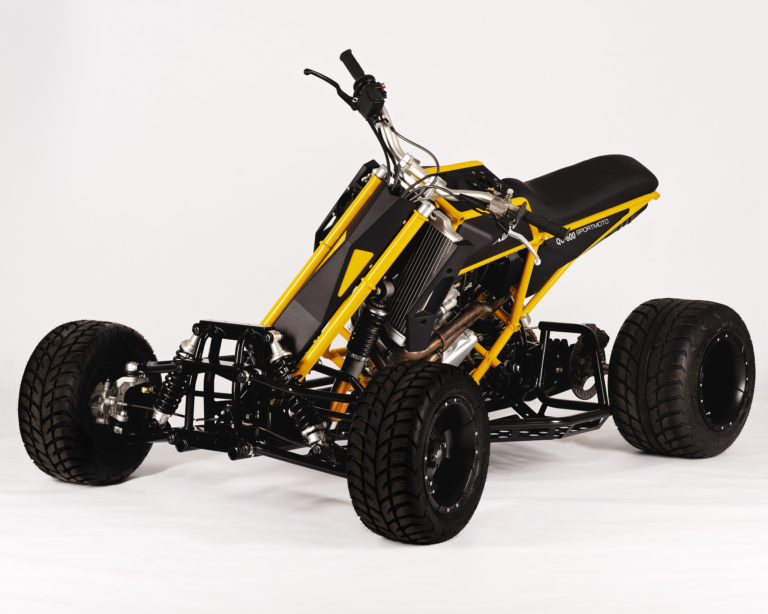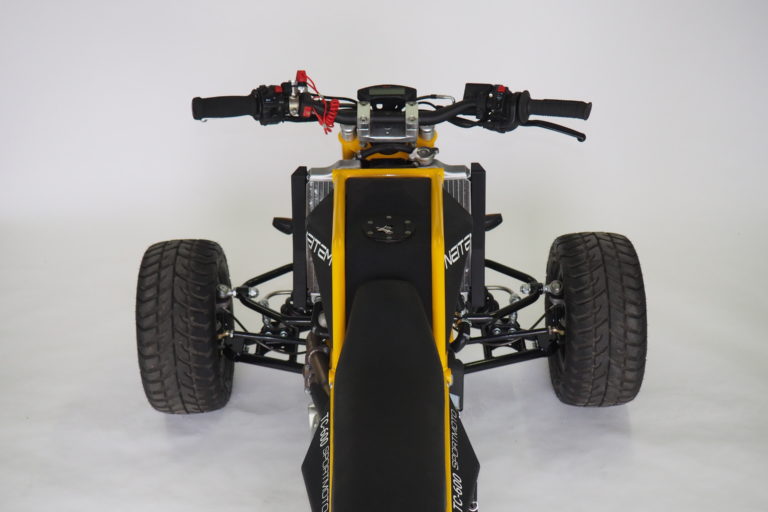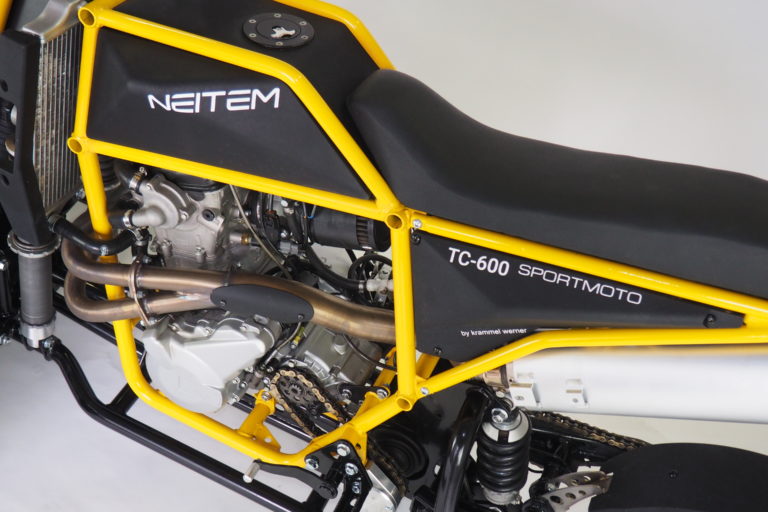3D printing meets innovative chassis technology
3DBAVARIA manufactures parts for NEITEM - driving technology
More safety when cornering for quad/ATV vehicles. A special tilting technology was developed by the engineer Werner Krammel from Bad Abbach to avoid or reduce the dangerous risk of rollover of Quad - and ATV vehicles. He relies on additive manufacturing for the cladding elements of the vehicles.
The idea for the NEITEM technology came to engineer Werner Krammel, himself a long-time motorcyclist, when he had the opportunity to try out an ATV/Quad. Unlike what he was used to on a motorcycle, the conventional quad/ATV vehicle leans outward when cornering and threatens to tip over with the rider. The safety risk of these vehicles is further increased when braking is required in the curve.
To make the feeling and effect of the motorcycle also possible for the quad/ATV vehicles and also to provide more safety while driving, Krammel developed the NEITEM technology. This combines a fixed chassis (black frame) with a tilting body (yellow frame), creating a completely new vehicle design. This offers the driver the possibility of tilting the body into the curve when cornering, as on a motorcycle, while the chassis maintains the maximum contact area of the tires with the road surface. With this chassis technology, quad/ATV vehicles can also be used to accelerate and brake while cornering.
Technical innovation from four components
The development itself presented a technical challenge, requiring new solutions and posing new technical questions, from which the four main components of the chassis technology ultimately emerged: Firstly, the tilt frame, which is connected to the chassis via a common tilt axis and can be tilted into the curve by the driver at an angle of up to 40° when cornering. Also, the special two-track drive including the tilt gearbox, which transfers the power of the drive from the tilt frame via the chassis to the drive wheels and axles of the vehicle without the driver noticing this during acceleration or braking. In addition, the tilt steering, which is the central functional unit of the technology. As with a motorcycle, the rider can change the direction of travel by tilting the frame and/or turning the handlebars. The innovative arrangement of the functional elements in the steering system also provides the driver with permanent information about the steering behavior and the contact of the vehicle with the road. The fourth component of the technology is the newly developed suspension, which is arranged symmetrically between the tilt frame and the chassis and can be individually adjusted to the driver and his requirement profile.
3D printed trim elements
As the NEITEM technology itself is characterized by highly innovative main components, Krammel also relies on advanced manufacturing processes for other elements of its NEITEM vehicles. For example, the cladding elements of the vehicles are manufactured using our SLS 3D printing process. The SLS process, short for selective laser sintering, is our most versatile additive manufacturing method and is ideally suited for the production of high-quality functional parts, among other things. In this manufacturing method, fine plastic powder serves as the starting material, which is applied in a thin layer to the 3D printer's build platform at the beginning of the printing process. Before printing, the 3D data of the respective part is also sliced into thin layers using so-called slicing software and then loaded onto the SLS machine. Afterwards, a laser is used to fuse the powder. The powder is exposed layer by layer with the prepared 3D data until the final part shape is achieved. After that, the parts still have to cool down and be freed from excess loose powder before they are ready for use.
The material used for the NEITEM cladding elements was SLS - PA12, which is characterized by excellent mechanical properties and very good dimensional stability. The material differs from normal PA12 in its production process and thus has a higher crystallinity and melting point. SLS PA12 parts are white directly after printing and various finishing processes are available. In the case of NEITEM, for example, the trim parts were dyed black after printing. In this process, the parts are placed in a water bath with textile dye, which causes the dye to superficially penetrate the parts. After a short drying phase, the parts can then be used directly.
In the following picture gallery we show you how the NEITEM vehicles with the 3D printed cladding parts look like:



For more information on NEITEM - driving technology for Quad/ATV vehicles and the company, please visit the company website: https://www.neitem.com/
Do you have a similar project that you would like to realize with the help of additive manufacturing? Feel free to contact us: info@3dbavaria.com
Pictures: NEITEM